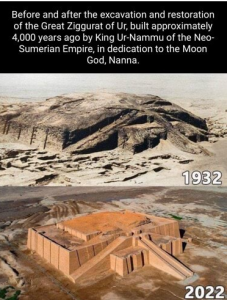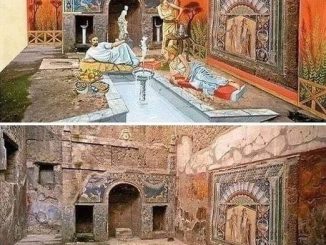A Monument to History
Nestled in the heart of modern-day Iraq, the Great Ziggurat of Ur stands as a towering testament to ancient ingenuity and religious devotion. Constructed approximately 4,100 years ago by King Ur-Nammu of the Neo-Sumerian Empire, this monumental structure was dedicated to the moon god Nanna, a central deity in the Sumerian pantheon. Recent archaeological efforts have focused on the excavation and restoration of this magnificent edifice, offering a glimpse into one of civilization’s earliest urban centers. This blog post explores the significance of the Great Ziggurat of Ur, the challenges and discoveries faced by archaeologists, and the broader implications of unearthing such a pivotal piece of human history.
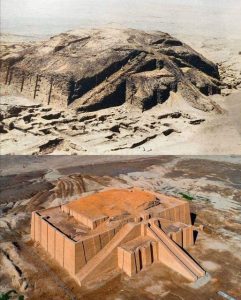
Unveiling the Past: The Excavation Efforts
The excavation of the Great Ziggurat of Ur has been a monumental task, undertaken by international teams dedicated to uncovering the secrets of this ancient wonder. Through painstaking work, archaeologists have revealed the ziggurat’s massive footprint, which once served as a religious hub for the Sumerian people. Detailed images from the site showcase the structure’s intricate brickwork and the scale of its construction, underscoring the advanced architectural capabilities of the Neo-Sumerian Empire.
These efforts have not only provided insight into the construction techniques of the era but have also unearthed artifacts that offer a window into the daily lives of those who lived and worshipped here. From ceremonial objects to inscriptions praising Nanna, each discovery helps piece together the complex tapestry of Sumerian society and its deep-rooted spiritual traditions.
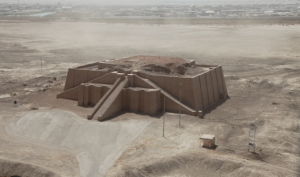
A Labor of Love: The Restoration Process
The restoration of the Great Ziggurat of Ur is as much a labor of love as it is a technical challenge. Conservators face the daunting task of preserving the structure’s integrity while staying true to its original construction methods and materials. This delicate balance involves reinforcing the ancient mud-brick foundation, restoring eroded areas, and preventing further damage from environmental factors.
Photographs of the restoration process reveal the careful attention to detail and respect for historical accuracy that guides this work. By revitalizing the ziggurat, conservators aim not only to preserve it for future generations but also to reconnect with the engineering prowess and spiritual depth of the Sumerian people.
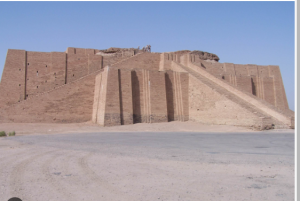
Bridging Time: The Ziggurat in Modern Context
The Great Ziggurat of Ur’s excavation and restoration have broader implications beyond the archaeological community. This ancient structure serves as a bridge between the past and present, offering lessons in resilience, innovation, and the universal quest for understanding our place in the cosmos. The ziggurat’s enduring presence reminds us of humanity’s shared heritage and the timeless nature of our spiritual inquiries.
As we marvel at images of the restored ziggurat, we are invited to reflect on the continuity of human civilization and the ways in which our ancestors sought to make sense of the world around them. The Great Ziggurat of Ur, in its majesty and mystery, continues to inspire awe and wonder, serving as a poignant reminder of our interconnectedness with those who walked the earth millennia before us.
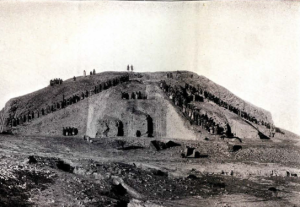
Conclusion: A Legacy Unearthed
The excavation and restoration of the Great Ziggurat of Ur stand as a monumental achievement in the field of archaeology, shedding light on the Neo-Sumerian Empire and its contributions to human history. This ancient ziggurat not only highlights the architectural and spiritual achievements of the Sumerians but also underscores the importance of preserving our cultural heritage.
As we delve into the past through such ancient discoveries, we are reminded of the enduring human spirit, characterized by creativity, devotion, and an unending quest for understanding. The Great Ziggurat of Ur, in its restored glory, offers a tangible connection to our ancestors, inviting us to explore the depths of our history and the breadth of our potential.
Through the painstaking efforts of archaeologists and conservators, the Great Ziggurat of Ur continues to stand as a beacon of ancient wisdom and a testament to the enduring legacy of human civilization. As we gaze upon the images of this ancient marvel, let us take a moment to appreciate the rich tapestry of our shared heritage and the timeless lessons it offers for the future.
